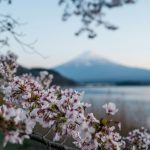Table of Contents
After living in Tokyo for three years and hosting countless budget-conscious friends, I’ve discovered how to experience this notoriously expensive city without emptying your savings account. Here’s every money-saving secret locals taught me over late-night ramen and hidden izakaya conversations.
Where to Stay Without Going Broke
Forget expensive districts like Shinjuku and Ginza. Base yourself in Koenji or Shimokitazawa – Tokyo’s coolest neighborhoods where locals live. I found a stylish Airbnb in Koenji for $45 per night that would’ve cost $200 in Shinjuku. These areas offer better food, more authentic experiences, and direct train access to all major attractions.
Even better, consider areas like Nakano, Asagaya, or Sangenjaya. These local neighborhoods offer amazing food scenes, traditional shopping streets, and cozy guest houses for half the price of tourist areas. In Nakano, I discovered a family-run ryokan that costs just $50 per night and includes a traditional Japanese breakfast.
The ultimate accommodation hack? Business hotels during weekends. Japanese salary workers clear out on Fridays, and prices drop by 50%. I regularly book Tokyu Stay hotels for $60 per night – they even have washing machines in the rooms. Better yet? Most business hotels offer late check-out on Sundays and free coffee all day.
Food That Won’t Break the Bank
Those $300 sushi dinners? Skip them. The best food in Tokyo is often the cheapest. Standing sushi bars in places like Uogashi Nihon-Ichi offer premium cuts for $1-2 per piece. My favorite spot in Shibuya serves the same quality as Michelin-starred places for a quarter of the price.
Department store basements (Depachika) are your secret weapon. After 7 PM, they slash prices on high-end bento boxes and prepared foods by 50%. I once bought a $40 Wagyu beef bento for $12. Head to Isetan in Shinjuku or Takashimaya in Nihonbashi an hour before closing for the best deals.
The real ramen secret? Skip the famous shops with long lines and find neighborhood joints. Look for places where local workers eat lunch – they know the best spots. My favorite ramen in Tokyo is a tiny shop in Asagaya where the chef has been perfecting his recipe for 40 years. Best part? It’s only ¥800 ($7) per bowl.
Transportation Without Tourist Prices
Don’t buy the tourist subway passes – they rarely save money unless you’re racing around the city. Instead, get a regular Pasmo or Suica card and walk between nearby stations. Some of Tokyo’s best discoveries happen during these walks.
The late-night taxi problem? Solved. Instead of paying $50 for a taxi after the last train, find a manga cafe. For $10, you get a comfortable booth, unlimited drinks, and internet until the first train. They’re nicer than some hotels I’ve stayed in.
Free Attractions That Locals Love
Skip the expensive observation decks. The Tokyo Metropolitan Government Building offers the same views for free. Go just before sunset to see the city transform from day to night. The secret? The south tower has shorter lines but better Mount Fuji views.
For a perfect day without spending a yen, start at Meiji Shrine early in the morning (free), explore the backstreets of Harajuku (fascinating people-watching), then head to Shimokitazawa for live street music and vintage shopping (looking is free!). End your day at Yoyogi Park watching local dance groups practice – better entertainment than any paid show.
Shopping Like a Local
100 yen shops in Tokyo are nothing like dollar stores back home. Can You buy high-quality kitchenware, stationery, and even electronics for less than $1? Daiso in Harajuku has six floors of treasures that look way more expensive than they are.
For authentic souvenirs, skip tourist areas and head to local Shotengai (shopping streets). Yanaka Ginza offers traditional crafts for half the price of Asakusa. I found handmade chopsticks for ¥500 that cost ¥2000 in tourist spots. Don’t miss Sunamachi Ginza in Koto ward – it’s like stepping back in time, with traditional snacks and crafts at local prices.
Nightlife Without the Tourist Tax
Tourist bars in Roppongi charge $15 for a beer, but local izakayas offer all-you-can-drink deals (Nomihodai) for $20-30 including food. Look for places with red lanterns and salarymen – that’s how you know they’re good and affordable.
The real nightlife hack? Head to yokocho alleys – tiny streets packed with local bars. Golden Gai gets all the attention, but places like Harmonica Yokocho in Kichijoji offer the same atmosphere at half the price. Many bars here have seating charges, but you can often get them waived by ordering food or speaking basic Japanese
Cultural Experiences for Less
Want to see sumo? Skip the expensive tournaments and visit morning practice sessions (asageiko) at sumo stables for free. Just email them in advance and be respectful. You’ll get closer to the action than any tournament seat.
Many temples offer free meditation sessions and calligraphy lessons – you just need to know when to go. Rinno-ji Temple in Yanaka holds free Zen sessions every morning. They even provide English instruction if you ask nicely. For traditional Japanese arts, check university cultural clubs – many welcome visitors to watch or participate in tea ceremonies and martial arts practices.
Seasonal Secrets
Cherry blossom season isn’t just about expensive parks. Local favorites like Yanaka Cemetery and Zenpukuji River offer stunning views without entrance fees. The nighttime cherry blossom viewing (Yozakura) at these spots is magical and free.
Hidden Food Markets and Local Gems Skip Tsukiji’s tourist crowds and head to Ota Market instead. While technically a wholesale market, they allow visitors after 9 AM. The sushi restaurants here serve breakfast sets for ¥1000 which would cost ¥5000 in tourist areas. Even better, visit Ameyoko Market in Ueno for street food and local snacks at wholesale prices. The vendors start discounting fresh food an hour before closing – I once bought premium fruit for 70% off.
Public Baths and Wellness: Those expensive Tokyo spas? Skip them for local Sentos (public baths). These traditional bath houses cost just ¥500-800 and offer the same relaxing experience. Kodai-yu in Setagaya has a beautiful outdoor bath and massage chairs for just ¥700. Many neighborhoods still have “super Sento” with saunas, multiple baths, and relaxation rooms for under ¥1500.
Museum Secrets Most Tokyo museums offer free admission on specific days. The National Museum is free on the first Sunday of each month, while the Contemporary Art Museum waives fees every Saturday evening. Even better? University museums like the Intermediatheque are always free and house incredible collections most tourists never see.
Local Entertainment Spots Skip expensive tourist shows and discover local entertainment. Asagaya’s Jazz Streets feature free live music every weekend, while Shimokitazawa’s theaters offer pay-what-you-can performances. Street performers in Yoyogi Park often put on better shows than ticketed events, especially on weekends.
Community Events and Festivals Each neighborhood hosts monthly festivals most tourists never hear about. Koenji’s Awa Odori in August is free and more exciting than many paid events. Look for local matsuri (festivals) – they always have free entertainment and cheap street food. The Kichijoji Autumn Festival is my favorite, with traditional performances and food stalls where nothing costs more than ¥500.
Real Tokyo Magic
Last week, someone asked if budget travel in Tokyo meant missing the best experiences. That evening, I sat at a tiny counter in Koenji, eating the best sushi of my life for $30, while the chef’s grandmother taught me about different seaweed types. Later, I watched the sunset from a secret spot in Yoyogi Park where locals practice traditional dance every weekend. Sometimes the most authentic experiences in Tokyo aren’t about how much you spend, but about knowing where the locals go. After all, the real Tokyo isn’t found in tourist guides – it’s in the quiet neighborhoods where generations of families still live above their shops, and where the true heart of the city beats strongest.

I’m Garrett, a seasoned photojournalist with a passion for uncovering the world’s hidden treasures. My journey is fueled by a deep curiosity for diverse cultures and breathtaking landscapes. When I’m not behind the lens capturing the world’s wonders, you can find me exploring underwater realms or sharing my passion for discovery with my two adventurous children.




